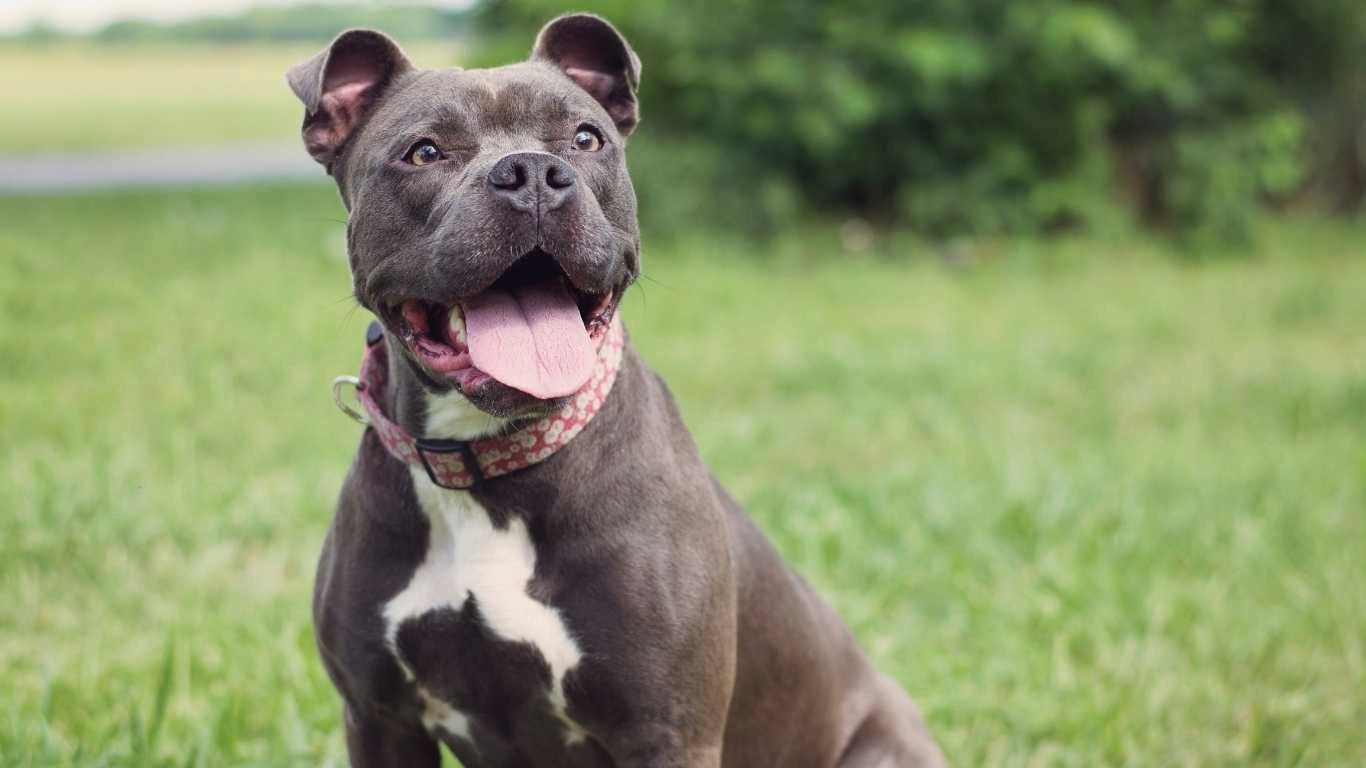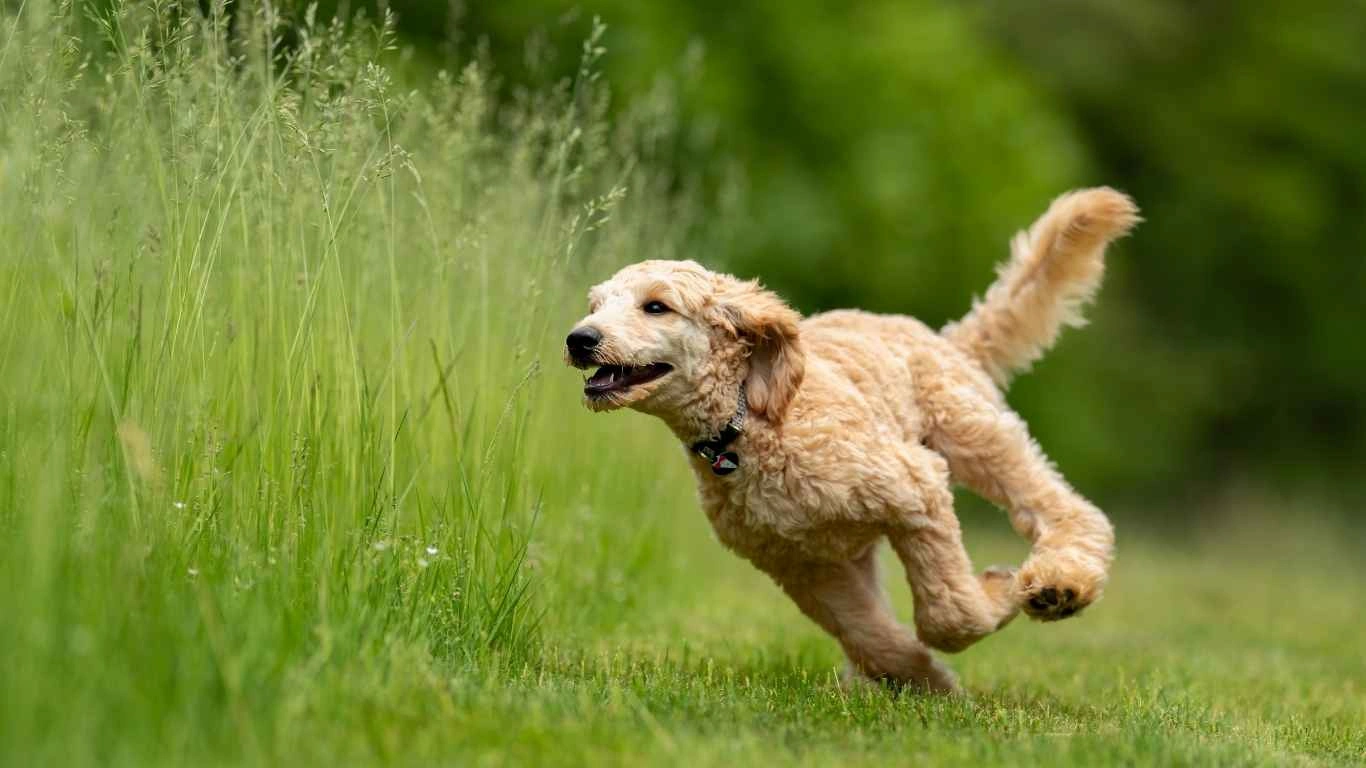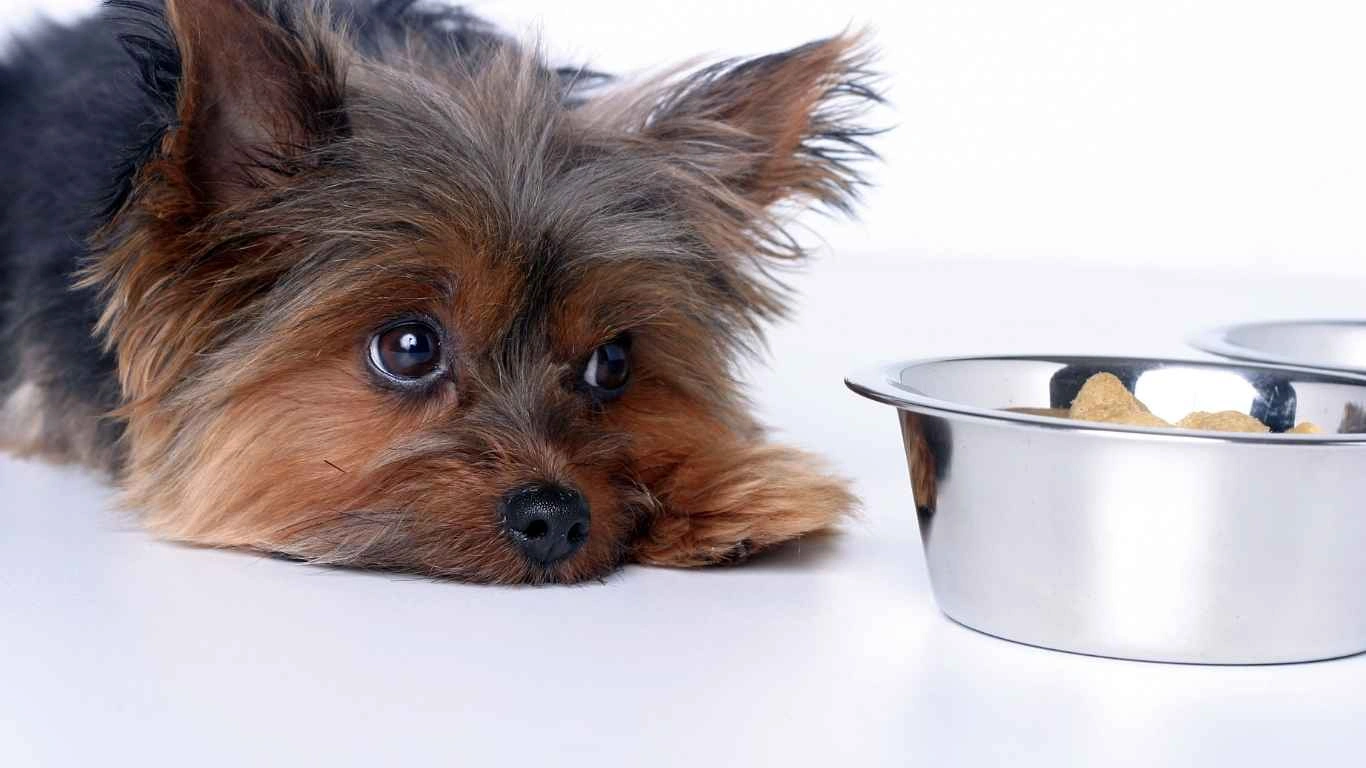How to Feed a Dog with a Slow Metabolism for Better Health and Energy
As a pet nutritionist with years of hands-on experience in veterinary clinics, I’ve encountered a variety of dogs, each with their own unique needs. One issue that often comes up is figuring out how to feed a dog with a slow metabolism. It’s a tricky balance to ensure they get the nutrition they need without overfeeding, which can lead to unwanted weight gain. In this article, I’ll walk you through everything you need to know, from identifying the signs of a slow metabolism in dogs to the best diet choices and feeding strategies to keep your dog healthy and happy.
What is a Slow Metabolism in Dogs?
Before we dive into the specifics of feeding a dog with a slow metabolism, it’s important to understand what it actually means. In simple terms, a slow metabolism in dogs means their bodies burn calories more slowly than usual. This could be due to a variety of factors such as age, breed, medical conditions, or even inactivity. When a dog has a slow metabolism, it can be harder for them to maintain a healthy weight, which can lead to obesity if not managed properly.
Having worked with many pet parents who are concerned about their dogs’ weight, I can tell you that a slow metabolism can show up in different ways. Some of the most common signs I see are:
- Weight gain, despite normal food intake
- Less energy or increased lethargy
- Difficulty shedding excess pounds even with a change in diet
- Skin issues or dull fur
- Excessive shedding
If you notice any of these signs in your dog, it might be time to consider adjusting their diet and feeding routine to better suit their metabolic needs.

Feeding a Dog with a Slow Metabolism
When it comes to how to feed a dog with a slow metabolism, there’s no one-size-fits-all approach. Each dog is different, and their nutritional needs will depend on their specific condition, age, and breed. However, I’ve seen some common principles work time and time again, and I’m excited to share them with you!
Choose the Right Type of Food
One of the first things to consider when adjusting your dog’s diet is the type of food they’re eating. Dogs with slow metabolisms often benefit from high-quality, nutrient-dense food that’s specifically formulated for weight management or senior dogs. These formulas typically have a higher protein content, lower fat levels, and plenty of fiber to help with digestion.
In my experience, I’ve found that dogs on a high-protein, low-fat diet tend to do better when it comes to weight management. Protein is essential for building lean muscle mass, which helps boost the metabolism. Additionally, fiber helps dogs feel fuller for longer periods, preventing them from overeating and gaining excess weight. Here are some good options:
- Lean meats: Chicken, turkey, and fish are great sources of lean protein.
- Whole grains: Brown rice, oats, and quinoa provide fiber and essential vitamins.
- Vegetables: Carrots, spinach, and sweet potatoes are packed with nutrients without excess calories.
If you’re not sure which food to choose, consult your vet for recommendations on dog food brands that are suitable for slow metabolism. My go-to advice? Stick to high-quality, natural ingredients and avoid fillers like corn and soy, which don’t offer much nutritional value.

Portion Control is Key
Feeding a dog with a slow metabolism often requires more than just choosing the right food – portion control is crucial. With slower metabolism, your dog may not need as much food as a typical dog of their size and breed. Overfeeding, even with healthy food, can still lead to weight gain.
When I work with pet parents, I always emphasize the importance of measuring out food rather than just eyeballing it. It’s easy to give a little extra when you’re feeling generous, but those extra calories can quickly add up. For dogs with a slow metabolism, I recommend starting with the serving size suggested on the food package, but adjusting based on their activity level and weight.
Here’s a tip I often share with dog owners: try feeding smaller, more frequent meals throughout the day instead of one or two larger meals. This helps prevent overeating and keeps your dog’s metabolism working steadily throughout the day. Also, avoid feeding your dog right before bedtime, as their body will have more difficulty processing the food during sleep.

How to Recognize If Your Dog Needs a Change in Diet
It’s important to keep an eye on how your dog’s body is responding to their diet. If you’re noticing that they’re still gaining weight or becoming more lethargic despite your best efforts, it might be time to tweak their food intake or try a different approach. Here are some signs to look out for:
- Persistent weight gain despite cutting down on food
- Lack of interest in play or exercise
- Changes in coat quality, like dull fur or excessive shedding
- Unusual gastrointestinal issues (like constipation or bloating)
If you’re seeing these signs, it’s always a good idea to consult your vet for further advice. They can help you assess your dog’s health and offer personalized recommendations. In some cases, your dog may require a specialized diet or even medication to help boost their metabolism.
Exercise and Mental Stimulation for Dogs with Slow Metabolism
Feeding your dog right is essential, but we can’t forget about the importance of exercise and mental stimulation. You might think that dogs with slow metabolisms can’t handle a lot of physical activity, but that’s not necessarily the case. While you’ll want to tailor the intensity and duration of exercise to your dog’s specific needs, regular movement is just as crucial as their diet when it comes to weight management and overall health.
From my experience, a good mix of both physical and mental exercise helps keep dogs active and engaged, even if their metabolism is on the slower side. This also helps keep their energy levels up and their muscles toned, preventing them from becoming sedentary and overweight. Dogs with slow metabolisms tend to enjoy shorter, more frequent walks, so aim to take them out for walks throughout the day instead of one long stretch.
Low-Impact Activities for Dogs with Slow Metabolism
When recommending exercises for dogs with a slow metabolism, I always suggest starting with low-impact activities. This helps avoid stressing their joints, especially if they are older or carrying extra weight. Here are some fun activities that can help your dog burn calories without overexerting themselves:
- Short walks: Aim for multiple shorter walks each day, instead of one long walk.
- Gentle fetch: Tossing a toy for your dog to fetch can be a great way to get them moving without overdoing it.
- Swimming: If your dog enjoys water, swimming is an excellent full-body workout that’s easy on the joints.
- Interactive play: Play games like hide and seek or tug-of-war to get your dog moving indoors.
Keep in mind that dogs with a slow metabolism might need more frequent breaks during exercise. It’s important not to push them too hard, as this could cause them to become overexerted or stressed. It’s always best to monitor your dog’s energy levels and adjust accordingly. Also, don’t forget that mental stimulation plays a significant role in keeping your dog engaged and avoiding weight gain.

Incorporating Mental Stimulation
Dogs with a slow metabolism often benefit from mental stimulation, as it helps keep them engaged and can prevent boredom-related overeating. I’ve seen many dogs who, when left unstimulated, begin to indulge in extra treats or beg for food because they’re simply bored. Mental exercise can help combat this. It also keeps their brain sharp, which is equally important for their overall well-being.
Here are a few ways to provide mental stimulation for your dog:
- Interactive toys: Toys like puzzle feeders or treat-dispensing balls can keep your dog’s mind occupied while they work to earn a snack.
- Training sessions: Teach your dog new tricks or reinforce old ones. Positive reinforcement with treats (in moderation) can keep their brain sharp while helping with obedience.
- Food puzzles: Turn mealtime into a mental challenge by hiding your dog’s food in puzzle bowls or hiding it around the house.
- Socialization: Arrange playdates with other dogs (or even people) to keep them social and mentally stimulated.
Regular mental exercise helps your dog stay balanced and engaged, which ultimately contributes to their health and metabolism. The more engaged their mind is, the less likely they are to become bored and overeat!
Adjusting the Diet with Age and Health Conditions
As your dog ages or if they develop certain health conditions, you may need to adjust their diet to continue supporting their slow metabolism. A dog’s nutritional needs change over time, and it’s important to stay on top of these changes to ensure they’re getting the best possible care.
Senior Dogs and Slow Metabolism
In my practice, I’ve often found that senior dogs have slower metabolisms due to the natural aging process. As dogs get older, they become less active, and their muscle mass decreases, both of which can contribute to a slower metabolism. This makes it even more important to monitor their diet closely to avoid weight gain.
For older dogs with a slow metabolism, consider the following changes to their diet:
- Increase fiber: Fiber helps with digestion and can keep your dog feeling fuller for longer, preventing overeating.
- High-quality protein: Lean proteins are still essential for muscle maintenance, even in older dogs.
- Joint support: Look for food formulas that include ingredients like glucosamine and chondroitin to support your dog’s joints, which can be more vulnerable as they age.
- Smaller, more frequent meals: Splitting your dog’s food into smaller meals throughout the day can prevent overeating and improve digestion.

Managing Health Conditions with Slow Metabolism
In addition to age, certain health conditions can also slow down your dog’s metabolism. Hypothyroidism, for example, is a common condition that affects a dog’s metabolism. It can lead to weight gain, lethargy, and even skin problems. If your dog has been diagnosed with a condition that affects their metabolism, it’s essential to work closely with your vet to adjust their diet and treatment plan accordingly.
When dealing with health conditions like hypothyroidism or diabetes, your vet may recommend a special prescription diet or adjustments to your dog’s regular food. They might also suggest medication to help regulate your dog’s metabolism. Always follow your vet’s advice closely, as a tailored plan is crucial for dogs with metabolic issues due to illness.

Monitoring Progress and Adjusting the Plan
Once you’ve put a plan in place for feeding and exercising your dog with a slow metabolism, it’s important to monitor their progress regularly. The key here is to make adjustments as needed. What works at one stage in your dog’s life may need to be tweaked as they age or as their health changes.
Be sure to regularly weigh your dog and keep an eye on their energy levels. If you’re seeing any signs that they’re gaining weight despite sticking to the plan, or if they seem more sluggish than usual, it might be time to adjust their diet, exercise routine, or even consult your vet for additional guidance.
Ultimately, managing a dog with a slow metabolism requires patience, observation, and consistency. But with the right approach, you can ensure your dog stays healthy, happy, and active for years to come!
Common Myths About Feeding Dogs with Slow Metabolism
When it comes to feeding dogs with a slow metabolism, there are a lot of misconceptions floating around. As a pet nutritionist, I’ve heard everything from “slow metabolism dogs should eat less food” to “they need high-calorie diets to boost metabolism.” Let’s take a moment to bust some of the most common myths that could be leading pet owners astray.
Myth 1: Slow Metabolism Dogs Should Eat Less Food
One of the biggest misconceptions I encounter is the idea that dogs with slow metabolisms should eat less food. While it’s true that portion control is essential, drastically reducing your dog’s food intake can backfire. If you cut their food too much, they may not get the proper nutrients they need to maintain healthy muscle mass and energy levels. The key is choosing nutrient-dense food, not simply cutting down on portions. Ensuring that your dog’s food is packed with high-quality protein and fiber is more important than simply reducing the amount they eat.
Myth 2: Dogs with Slow Metabolism Need High-Calorie Diets
Another myth I’ve heard is that dogs with a slow metabolism should be fed high-calorie diets to “jump-start” their metabolism. While it’s important to provide enough calories for your dog’s activity level, overfeeding or choosing foods that are too high in calories can actually lead to obesity. The goal should be to provide a balanced diet with just the right amount of calories to meet their needs—without going overboard. Instead, focus on high-protein, low-fat foods that promote lean muscle mass and are easy on their digestive system.

Working with Your Veterinarian for Optimal Results
As with any health concern, when dealing with a slow metabolism in your dog, it’s always a good idea to work closely with your veterinarian. Veterinarians are the best resource when it comes to creating a personalized care plan for your dog. They can help you assess your dog’s health, recommend suitable diets, and even test for underlying conditions that might be affecting their metabolism, such as hypothyroidism or diabetes.
Throughout my years of experience, I’ve found that a strong relationship with your vet is invaluable in ensuring your dog stays on track with their diet and exercise. Sometimes, a slow metabolism might be the symptom of a larger health issue, and only your vet can determine the best course of action. Regular check-ups and blood work can help catch any hidden issues early, ensuring your dog gets the most effective treatment.
When you take your dog to the vet, be sure to mention any specific concerns you have about their weight, energy levels, or overall health. It’s helpful to keep track of their diet, exercise routine, and any changes in behavior. This will give your vet a better understanding of your dog’s condition and help them make the right recommendations.
Supplements to Support a Slow Metabolism
In some cases, a veterinarian may recommend adding specific supplements to your dog’s diet to help support their slow metabolism. Supplements can provide the necessary nutrients to enhance metabolism and overall health. However, I always recommend caution and professional guidance before adding anything new to your dog’s regimen.
Common Supplements for Dogs with Slow Metabolism
Some of the most common supplements that may support metabolism in dogs include:
- Omega-3 fatty acids: Omega-3s help reduce inflammation and support overall metabolic function. These fatty acids can also promote a healthy coat and reduce shedding.
- Probiotics: Probiotics support digestive health, which is especially important for dogs with a slow metabolism. Healthy digestion can help your dog absorb nutrients more efficiently.
- Glucosamine and chondroitin: For older dogs or dogs with joint issues, these supplements help support joint health and mobility, which is often impacted by a slow metabolism.
- Antioxidants: Vitamins like Vitamin E and C can help support a dog’s immune system and prevent oxidative stress, which may be more common in dogs with slower metabolisms.
While supplements can be beneficial, they should never replace a balanced diet. Always consult with your veterinarian to determine which, if any, supplements are appropriate for your dog’s specific needs.

How to Create a Balanced Meal Plan for Dogs with Slow Metabolism
Creating a balanced meal plan for your dog with a slow metabolism is about more than just portion control—it’s about providing the right kinds of nutrients at the right times. This means considering not only their food’s calorie content but also its nutritional profile, including protein, fat, fiber, and vitamins.
Step 1: Choose a High-Quality Dog Food Formula
Start by selecting a high-quality, balanced dog food formula that’s specifically designed for weight management or senior dogs. Look for foods that prioritize protein over fillers like corn or soy. Good sources of protein include chicken, turkey, and fish. These will support lean muscle mass, which helps with metabolism. Additionally, opt for fiber-rich foods such as sweet potatoes or pumpkin, which help regulate digestion and keep your dog feeling full longer.
Step 2: Adjust Portions Based on Activity Level
Once you have a good base food, it’s time to adjust the portions. The right portion size will depend on your dog’s size, weight, and activity level. Dogs with slow metabolisms typically require fewer calories than highly active dogs. Start by measuring your dog’s food carefully and monitor their weight regularly. If they start gaining weight, consider reducing their portions slightly. Conversely, if they seem lethargic or are losing weight, you may need to add a bit more food.
Step 3: Incorporate Regular Exercise and Mental Stimulation
Feeding alone isn’t enough to keep a dog with a slow metabolism healthy. Exercise and mental stimulation are just as important. Incorporate regular low-impact exercise like short walks, gentle fetch, or swimming into your dog’s routine. Keeping your dog’s mind engaged with puzzle toys or obedience training is just as important for their well-being.
Step 4: Monitor and Adjust as Needed
Remember, a slow metabolism isn’t something that stays static. As your dog ages or their activity level changes, you may need to adjust their meal plan. Always keep an eye on their weight, energy levels, and overall health. Regular check-ins with your vet can ensure you’re on the right track.
Disclaimer
The information provided in this article is based on my personal experience as a pet nutritionist and my work in veterinary clinics. However, every dog is unique, and what works for one dog might not work for another. Always consult your veterinarian before making changes to your dog’s diet or exercise routine. Your vet can help you create a personalized plan that takes into account your dog’s specific health needs.
For more resources on pet care and nutrition, feel free to visit pawpatron.org, where we share expert advice and helpful tips to keep your dog happy and healthy.






